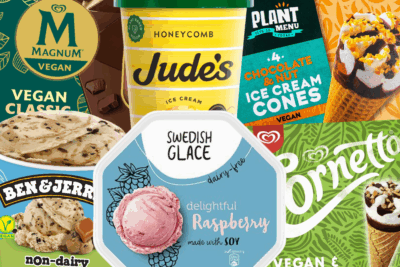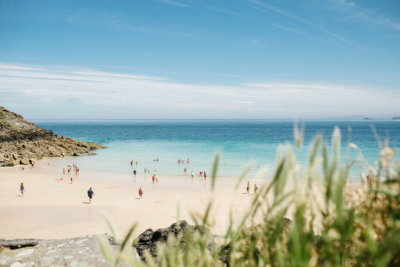Fashion houses are ditching animal furs like…well, like they’re going out of fashion…

Following in the footsteps of brands such as Stella McCartney, Tommy Hilfiger, DKNY, Ralph Lauren, and Vivienne Westwood, Burberry is the latest addition to the fur-free designer brand list, just in time for London Fashion Week. The fashion industry looks to be taking an ethical stance on the hot topic of fur.
Designer brand after designer brand is pledging to go faux, following consumer outcry and demand for responsibly-sourced fabrics. Could we soon see real fur, and indeed other animal fabrics such as leather, finally banished from the runway forever?
Fur Is Out
British fashion house Burberry is the latest designer label to renounce animal fur in favour of faux, synthetic materials and announced its decision to become a more responsible brand on 6 September.
The move comes as Burberry revealed its latest collection, designed by Chief Creative Officer Riccardo Tisci, will be shown at London Fashion Week this month and is entirely free from fur. Burberry has also told industry insiders that all current lines which include real animal fur and angora will be phased out over the coming months, making Burberry a soon-to-be completely fur-free brand.
Following the announcement, Marco Gobbetti, Chief Executive Officer, told the press:
“Modern luxury means being socially and environmentally responsible. This belief is core to us at Burberry and key to our long-term success. We are committed to applying the same creativity to all parts of Burberry as we do to our products.”
Trend Setters
In previous years, now reformed fashion houses such as Burberry were using a variety of animal-based fur trims and fabrics for their garments, including fox, rabbit and mink.
Since making the decision to ditch fur, campaign groups such as PETA and Humane Society International (HIS) are urging the remaining few unchanged brands, such as Prada, to make an ethical pledge towards fur abolishment.
Commenting on Prada’s continued use of real fur, HSI’s executive director Claire Bass told The Daily Mail:
“Brands like Prada that continue to sell animal fur are becoming increasingly isolated as top designers drop fur cruelty from their collections, knowing that the vast majority of consumers find it obscene and obsolete.”
After years of hard campaigning for the removal of fur and angora from Burberry’s collections, PETA published on its website:
“This great news comes after over a decade of campaigning by PETA…At that time, the question we wanted to ask the company was this: When will Burberry stop supporting cruelty to animals…and respect the will of 93% of the British public by removing all fur products from your stores? It’s been a long wait, but we’ve finally got our answer!”
Adding to its environmental prowess, Burberry also announced it will be putting a stop to the routine burning of any unsold merchandise in favour of recycling methods.
Earlier this year, the fashion house was reported to have sent £28.6 million of garments for incineration, a figure which will become obsolete if future efforts are successful.
Beyond Fur – The Future of Fashion
Why stop at fur? A complete ban on animal materials in the fashion industry would surely see an end to the needless suffering of thousands upon thousands of animals every year.
Leather, for example, is the most commercially bought and traded animal material, and is renowned by many as a premium quality product. However, up and coming innovative textile designers are shunning real leather in favour of plant-based faux-leather alternatives including apple fibre, pineapple skin, recycled materials including tyres, and tree bark.
Vegan fashion brands such as Matt & Nat, Hetty & Sam and Bourgeois Boheme utilise certified vegan materials to create luxury products from bags to shoes, with absolutely no cruelty necessary.
It won’t be long before we see a shift in material use within larger fashion houses. Setting the standard in mainstream fashion is Stella McCartney, the entire range of which is proudly vegetarian and free-from animal furs, feathers and leather.
Commenting on the environmentally-sound nature of the leather alternatives via the fashion house’s website, Stella McCartney adds:
“Our leather alternatives do not just look good, they are also better to the environment. Using recycled polyester instead of Brazilian calf leather, for example, creates 24 times less of an environmental impact, as calculated through the Environmental Profit and Loss (EP&L).”
We hope to see more brands progressing towards ethical alternative materials in the future. With so many fantastic faux-animal skins, furs and feathers, there’s more opportunity than ever before for designers to explore sustainable options.
Have you signed up to try vegan? We’ll send you daily emails with delicious recipes, meal plans and helpful tips. We’ll also send you information about the impact of what we eat on our health, animals and the environment. And you’ll be the first to hear about appeals, vegan news and exciting offers! What are you waiting for? Sign up now (for FREE) and we’ll send you all the info you need to try vegan for 31 days!
THIS BLOG WAS WRITTEN IN 2018















